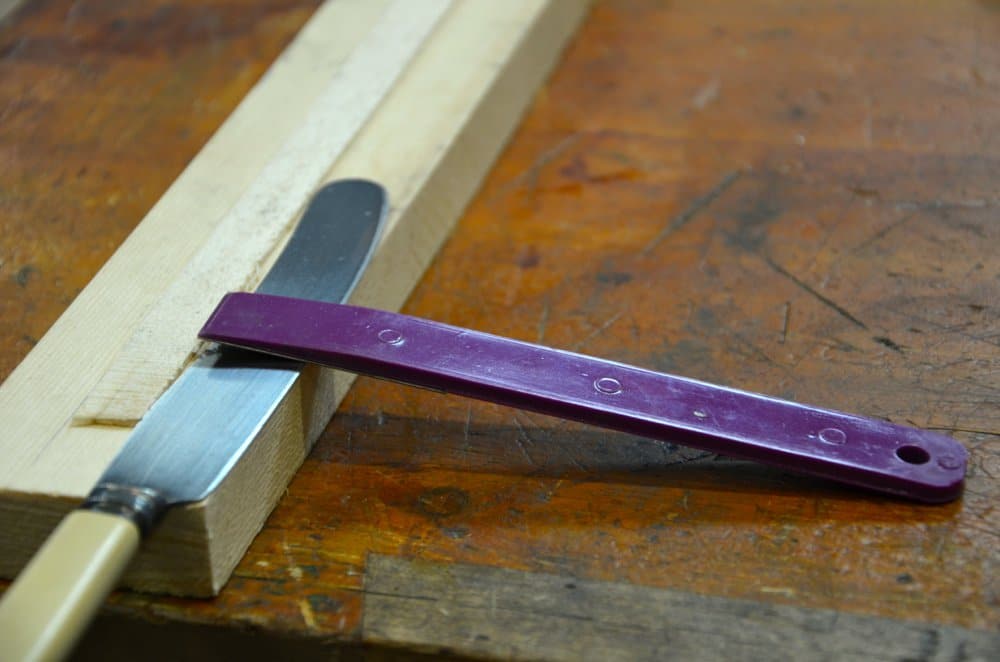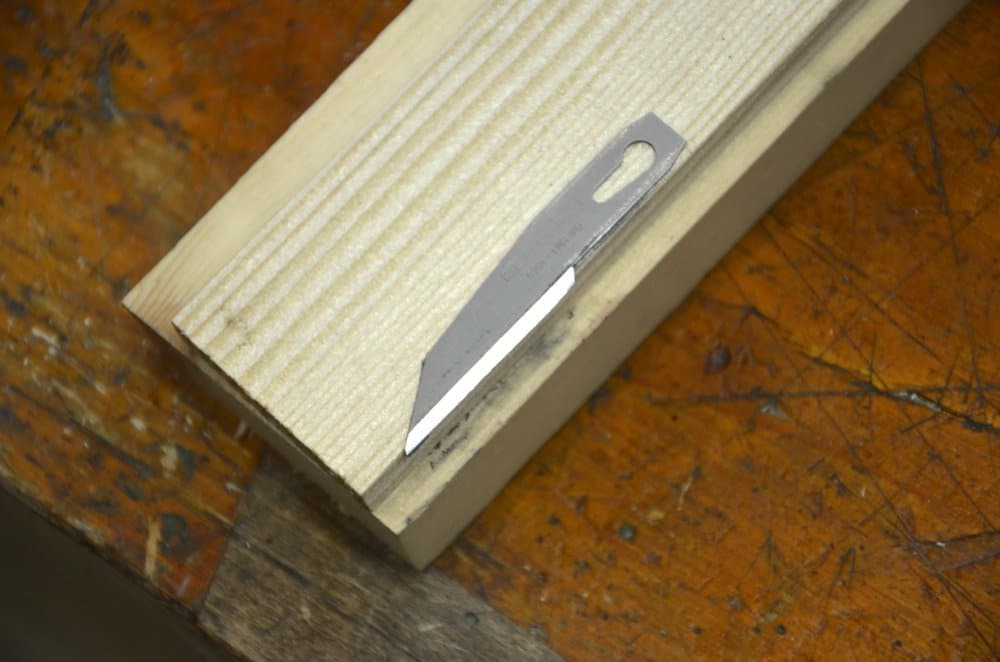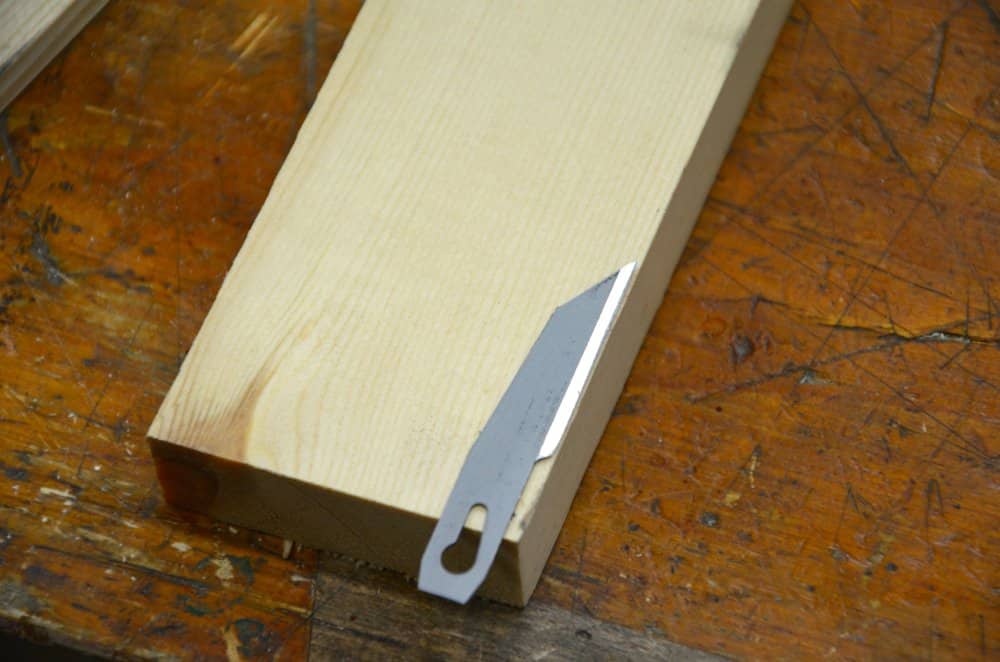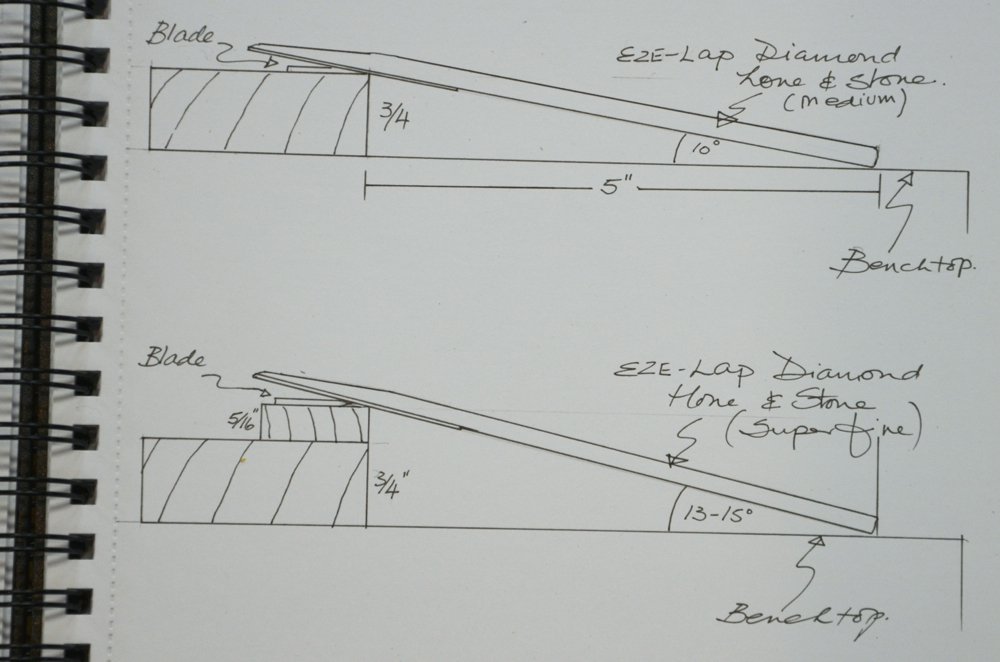More Sharpening Knife Notes
For more information on the woodworker’s knife, see our beginner site Common Woodworking.
From pocket knives to kitchen knives and just about any knife you care to name, a simple method to use is a piece of 3/4” piece of wood on the benchtop and an EZE-Lap diamond paddle.




These drawings should help understand.




Paul thanks again for sharing this, I have all ways and I will admit I am not good at sharpening knives. But this simple jig will help me with this for sure, will be my 1st project when I get in the shop Friday.
Steve
Without a sharp knife, you cannot do layout and joinery, so having jigs to do this is really helpful for us beginners. Sharpening knives has always been hard for me, but I wanted to encourage other beginners to learn to freehand their knives, too. For a straight bladed knife, like the Stanley that Paul suggests, it isn’t hard. It’s a matter of feel. What I do is to start with the blade flat on the stone and even pressure, base to tip. When you move the blade back and forth, it will feel like it is skating on the stone. As I move the knife back and forth, I slowly rotate the blade up onto the cutting edge. At some point, you can sense a change and the feeling changes from skating on the stone to more of grinding, vibrating feeling. Also, the sound changes and has more of a scratching sound. This is how I know I’m on the cutting edge. It’s really the same feeling I get with a bench chisel on a stone as I move from dressing the camber to actually grinding the edge. I take a few strokes back and forth, maybe te, focusing on keeping the blade flat along its length on the stone (base to tip), then I flip over and do the other side in the same way. I flip face to face fairly often, avoiding the buildup of a burr. I like to hold my stone in my palm when I do this, but it is easy to cut yourself if you do. I have no idea if this will match what Paul would teach, but I’ll say that I fiddled with jigs and, just like learning to do chisels free of jigs, sharpening a knife freehand is liberating. Nevertheless, Paul’s jigs are excellent ideas to produce a sharp knife- you must have one to do anything at all.
Sharpening knives is not just a matter of rubbing back and forth. There is a right way of doing this to avoid damaging the blades of your knives.
Great! Now I gotta figure out where to get a paddle, or where to get the moola to buy a paddle!